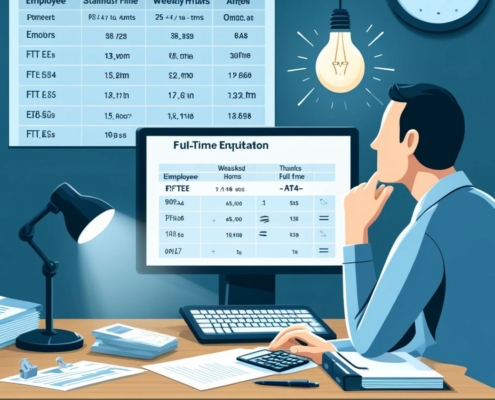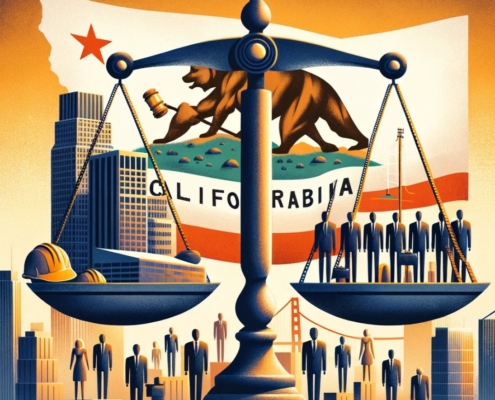Employment Law Articles
Learn and discover the latest useful employment law articles for practical information, DIY, and ideas from a network of leading business and corporate lawyers.
Learn more about: Business | Corporate | Employment

Employee Lifecycle: Understanding its importance for organizational success
Understand the seven stages of the employee lifecycle to enhance recruitment, development, and retention strategies at your company. This guide explains how to optimize each phase for improved employee engagement and performance.

DEI Certification: What it is and why it matters
A DEI certification equips HR professionals with essential skills to enhance workplace diversity and drive innovation. It explores top programs, their scope, duration, and costs, empowering career advancement in DEI.

30-60-90 Day Plan
A 30-60-90 day plan is a powerful tool for setting new hires and promoted employees up for success. It provides clear goals and integrates them with organizational objectives.

Higher Turnover: What does it mean and how to address it?
High turnover rates affect businesses by increasing operational challenges and financial costs due to frequent hiring and training. This article analyzes the impact of high employee turnover and strategies to manage it.

Behaviorally-anchored Rating Scale
Explore the benefits of using a Behaviorally Anchored Rating Scale (BARS) to enhance people management practices and performance evaluations. Understand how BARS compares behaviors with specific performance levels, aiding effective employee assessments.

Performance Improvement Plan Template
Enhance employee performance with a tailored Performance Improvement Plan (PIP) template, outlining steps for addressing gaps and boosting productivity. Utilize PIPs to foster better management-staff relations and improve job satisfaction.

Employee Testimonials: Understanding their impact and how to use them
Discover the power of employee testimonials in recruitment, featuring thirteen compelling examples that illustrate their effectiveness. See how testimonials can influence potential candidates and enhance your hiring strategy.

Needs Analysis Training
Understand the essentials of training needs analysis to effectively close knowledge and skill gaps in your workforce. This guide provides a strategic approach to enhancing organizational performance.

Skills For Recruiter
Discover essential recruiting skills critical for HR leaders today, including active listening and effective communication. Learn how technology and data improve recruitment processes.

How to Calculate FTE
To calculate full-time equivalent (FTE), divide an employee's scheduled hours by the employer's hours for a full-time workweek.

Weingarten Rights: Safeguarding employee representation in workplace investigations
Understand Weingarten Rights: the right to have a representative during investigatory interviews as protected under the NLRA. Learn how these rights empower employees and safeguard their interests.

Can you get fired for using sick time
Understand your rights under California's Sick Leave Statute, protecting employees who need to take time off due to illness. Learn how legal protections safeguard against wrongful termination for using sick leave.

Insubordination in the workplace: 7 ways to manage
Navigate the challenges of insubordination in the workplace with effective strategies for managing difficult employee behaviors and fostering a positive work environment. Learn the importance of distinguishing between disagreement and insubordination for organizational health.

Diversity, Equity, and Inclusion
Explore the importance of diversity, equity, and inclusion in today's society. Learn how these values shape better, more inclusive communities and workplaces.

Human Resources (HR): Meaning and Responsibilities
Human Resources plays a pivotal role in recruiting, training, and managing employee relations, shaping a company's workforce for success. Discover the evolving responsibilities and strategic importance of HR in modern business dynamics.

10 Alternatives to Employee of the Month Awards
Discover the limitations of traditional Employee of the Month awards and explore ten innovative alternatives. Boost morale and recognition in your workplace with these creative solutions.

Learning To Learn
Discover the essential skills for modern leaders to thrive: learning to learn, adapting to change, and mastering new capabilities. Unveil strategies for personal growth and overcoming reluctance to embrace new challenges.

Gen Z Years, Age Range, Meaning, & Characteristics
Explore the defining years, age range, and unique characteristics of Generation Z, shaped by pivotal events like the pandemic and the digital age. Uncover insights into Gen Z's diverse demographics, digital nativity, and shifting social norms.

What is Sabbatical Leave? It’s the best kept secret in HR
Unlock the power of sabbatical leave to boost employee motivation and retention in a stagnating labor market. Learn how a planned break can give your company a competitive edge in attracting top talent.

At-Will Doctrine
Explore the at-will employment doctrine's impact on job security and termination rights in the US, highlighting key legal exceptions. Understand how at-will affects both employers and employees, with insights into valid termination causes and protections.

7-Day Work Week
Discover your rights under the 7-day work week laws, including eligibility for overtime and restrictions in some states. Learn about federal and state regulations, and when to seek legal action for wage violations.

What Happens When Employers Make False Promises
A false promise happens when a employer or hiring manager makes a statement on something the company can fulfill or avoid, but cannot or does not want to follow through with. You may bring a fraudulent inducement lawsuit against the employer for false promises for the harm you have suffered.

What to do if your employer doesn’t pay you?
If your employer failed to pay you for all of your work hours, a court could award you back pay. When your employer doesn't pay you, you should consult with an employment lawyer.

What to Do At a Job Fair to Impress Employers and Get the Interview
This article provides guidelines for job seekers to follow to ensure they are successful at career fairs. There are many things you can do to improve your chances of getting hired at a job fair.

Emotional Duress: How to Avoid
Emotional duress is an extremely unpleasant emotional response from someone else's conduct or actions. You can sue for money damages for anguish, or humiliation. This is known as emotional harm or mental anguish.

California Termination Laws
In California, an employee's employment may be terminated at the will of either party. Employees who are terminated must be paid all wages due at the time of termination.

Late Paycheck Penalty
When your paycheck is late, the employer has to pay a penalty of one day's pay for each day that the paycheck is late, up to a maximum of thirty days.

How To Calm Down Before An Interview
12 simple ways on to calm your nerves before and during an interview is to use relaxation techniques. Before an interview, imagine how you would ideally want to present yourself in the interview and then visualize yourself in the interview.

How to Include a Referral in Your Cover Letter?
Your cover letter should start with mentioning the referral's name because it instantly qualifies you. A referral cover letter helps you to define the mutual contact that has referred you for the job.

Best Job Options For Someone With A Criminal Record
This article identifies jobs for someone with a criminal record; examples are: delivery service, freelance designer, truck driver, chef, etc.
15,024
